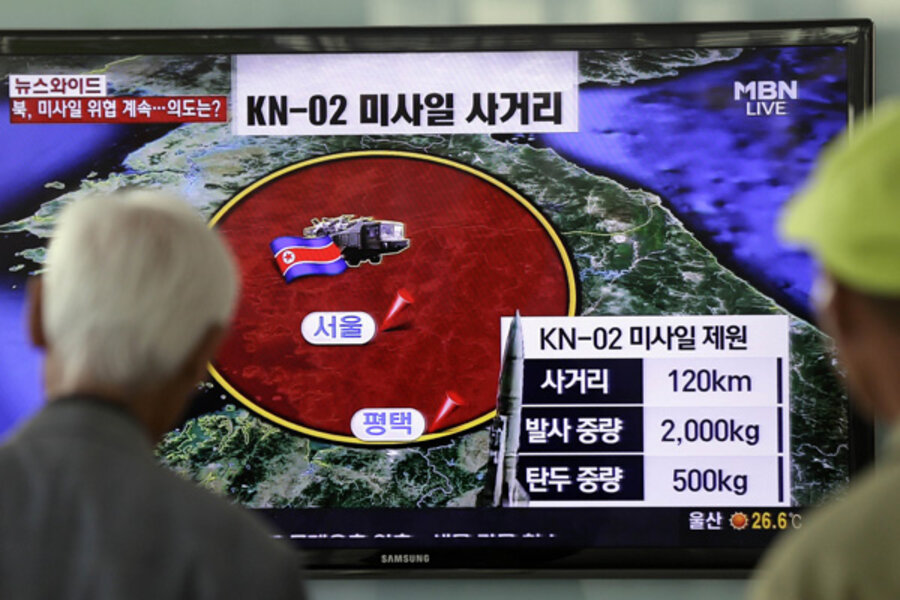Why did North Korea launch 6 missiles in 3 days?
| Seoul, South Korea
On Monday North Korea launched missiles into the East Sea for the third straight day, showing that it may be looking to further develop its military capabilities or grab international attention at a time when inter-Korean tensions had appeared to be cooling.
Today’s two launches follow three on Saturday and one on Sunday. However, because the move comes at a time of relative calm on the Korean Peninsula, analysts say it is likely that the North is testing new weaponry, rather than deliberately attempting to provoke the US or South Korea.
“If North Korea had carried out the launches when South Korea and the US were holding their joint military exercises, then that could have been interpreted as a threat to the South, the US, or the international community. But since they launched them now, when things are otherwise calm, they’re probably testing new technology,” says Paik Hak-soon, director of the Center for North Korean Studies at the Sejong Institute just outside of Seoul.
South Korea’s Defense Ministry had initially identified the weapons fired on Saturday as short-range KN-02 surface-to-surface missiles, which have a range of a little less than 100 miles, but on Monday said that perhaps they aren’t traditional missiles.
Still, the launches were condemned by South Korea and the US. "Whether it's a test-firing or armed demonstration, North Korea should not engage in tension-creating acts," Kim Jang-soo, head of the national security office, said on Monday through spokesperson Kim Haing.
Caitlin Hayden, spokesperson for the US National Security Council, said the weekend launches would only further isolate North Korea and urged the country’s leadership to “heed President Obama's call to choose the path of peace and come into compliance with its international obligations."
In April, North Korea moved long-range Musudan missile to its east coast, leading many to wonder if a launch was imminent and prompting the US, South Korea, and Japan to heighten their military postures. Musudan missiles have a range of up to 2,500 miles and would be capable of reaching South Korea, Japan, and the US territory of Guam. North Korea did not test the missiles at that time, partly, say analysts because they couldn't be sure the test would be successful. A failed launch attempt during a period of heightened tensions would result in a loss of face, say North Korean experts.
This time around, the US, South Korea, and Japan have not heightened their military postures in response.
South Korea has lately been seeking a way to draw North Korea into dialogue, but the totalitarian state has thus far refused any overtures. The launches over the weekend coincide with reports that the North seized some Chinese fishermen along with their boat this month, testing ties between the two allies.
North Korea sparked a period of prolonged tensions with its third nuclear test on Feb. 12. It shut down the Kaesong Industrial Complex, an industrial park jointly operated with South Korea, by first blocking entrance by South Korean workers on April 3, then by withdrawing all of 53,000 workers from the complex days later. The complex is still idle and Seoul and Pyongyang have not agreed to talks on the resumption of operations there.
The launches and the seized Chinese fishing boat may also be an effort to stay in the headlines, at a time when attention on North Korea had been waning, following the end of the joint South Korea-US Foal Eagle military exercises on April 30. Analysts widely believe that North Korea is attempting to create regional concern in an effort to strengthen its bargaining position and draw more aid from the international community.
“At this point we can’t tell if there is a broader meaning to these launches, but at the very least they have been successful in again grabbing the attention of South Korea and the US,” says Shin In-kyun, head of the Korea Defense Network, a group of analysts based in Seoul.







